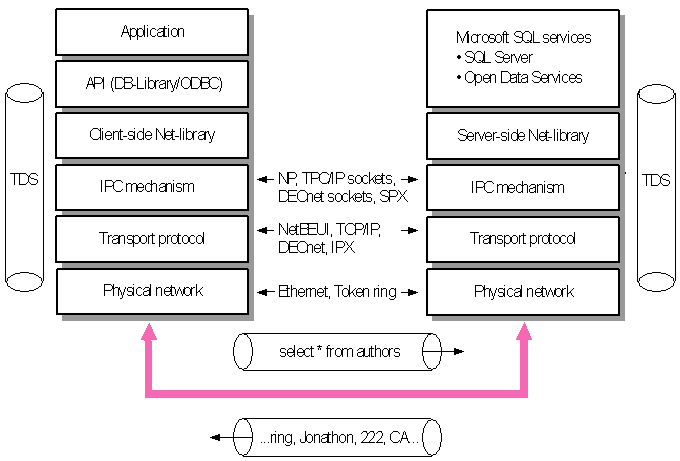
Figure 8.1 illustrates the key interfaces used to access data in a Microsoft SQL Server client-server environment. These include application programming interfaces (APIs), data stream protocols, interprocess communication (IPC) mechanisms, network protocols, and the Tabular Data System (TDS) protocol.

Figure 8.1 Levels and Interfaces Within the Microsoft SQL Server Architecture
The following sections describe each of these interfaces to SQL Server.
Each back-end database typically has its own application programming interface (API) through which it communicates with clients. A client application needing to access multiple back-end databases must be able to transform requests and data transfers into each of the corresponding APIs. Client-server applications communicate with Microsoft SQL Server through two APIs—Open Database Connectivity (ODBC) and DB-Library.
ODBC is an API for generic database connectivity for Windows and Windows NT platforms. It is designed to be a general-purpose call-level interface (CLI) for any database, including nonrelational DBMSs. The ODBC interface provides the needed functionality for applications that must access multiple DBMSs from different vendors. Application developers can develop, compile, and ship an application without targeting a specific DBMS, provided that DBMS-specific features are not used. ODBC ensures interoperability by forcing all clients to adhere to a standard interface. The ODBC driver automatically interprets a command for a specific data source.
DB-Library is a set of API calls designed specifically so multiplatform client applications can interact with Microsoft SQL Server. DB-Library provides the needed functionality for applications requiring client support for MS-DOS and OS/2, as well as for Microsoft Windows and Windows NT. It is also equivalent to the SYBASE Open Client interface on UNIX, VMS, and Macintosh systems.